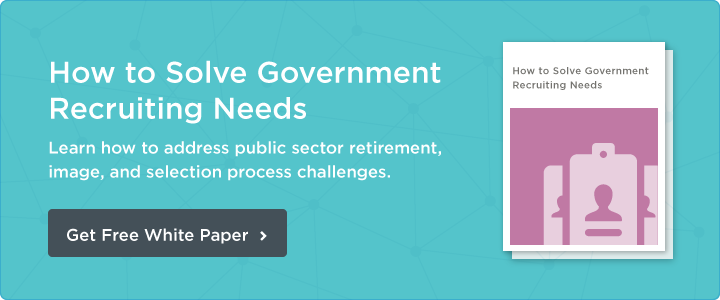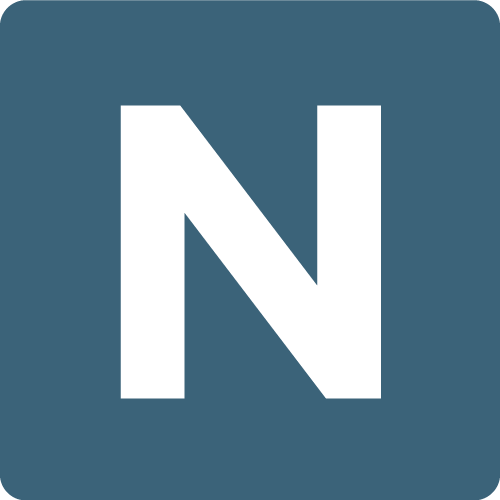Not receiving enough interest in your recruitment ads? It’s time you refined your strategy to attract the best talent. Find out how to write recruitment ads below.
Article Highlights
- Why writing to your target audience is key in recruiting
- What you need to include in your next recruitment ad
- How to optimize your ad so top talent can find your posting
More employees have resigned and it’s time to post yet another job. Fortunately, you’re well-acquainted with the process by now.
But you just aren’t receiving the number of applications you’re used to, especially from qualified candidates.
It’s not your imagination: you really are getting 21% fewer applicants on average. This means you need to be more thoughtful about your overall recruitment campaign, including how you write recruitment ads.
And a recruitment ad is so much more than just a description of job duties. At its essence, it’s an advertisement that promotes a role at your organization, demonstrates your workplace culture, and solidifies your organization’s brand. With a properly-written ad, you grab people’s attention and don’t let go.
That’s the theory, at least. But how do you put theory into practice?
Let’s find out. Below we’ll discuss five steps to creating attention-grabbing recruitment ads so you can fill your open positions with the best talent possible.
1. Speak to Your Target Audience
It pays to do some forward-thinking about your ideal candidate and target audience when writing your recruitment advertisement. If you can’t imagine the skills, education, and experience of your ideal candidate, you’re not going to be able to write an ad that meets their needs, goals, and expectations.
Which means that your target candidate isn’t going to apply to work for your organization. Your hiring process is stalled before it even starts.
So, who do you want to apply for the job? Do you have an existing pipeline of talent you may be able to draw from? Rather than focusing on finding the one perfect candidate, which can create unconscious bias among your hiring team, imagine the qualities your top candidate might possess. This might include things like:
- Education
- Certifications
- Specific skills
Next, take the time to understand your target audience’s perspective and needs. Think through all the questions they need you to answer in the recruitment ad. Consider what they need from a job and how an employer can meet these needs. Then, write job advertisements that describe how your organization can meet these needs.
And if one of your goals is to attract diverse candidates, whether that means gender, age, or racial diversity, think carefully about how your ad will appeal to individuals in these demographics. Diverse candidates want to know that their unique perspectives will be welcomed. Address these needs by:
- Ensuring the language used within the ad is non-gendered
- Discussing your organization’s diversity, equity, and inclusion practices
- Widening the scope of where you’re posting your job ad (for example, advertising job openings at a historically black college or university)
- Emphasizing your organization’s existing workforce diversity
2. Write a Specific Headline
To find the best talent, you need to capture the attention of potential candidates as they peruse job boards. How do you do this?
By writing a specific, engaging ad headline. A headline determines whether someone will read the rest of your post, so you need to write something that will immediately engage your target audience.
But this isn’t the time to get overly cutesy or resort to exaggeration to get clicks on your ad. Avoid incorporating things like exclamation marks, ALL CAPS, or emojis in your headline. While this may seem edgy to someone seeking a change of pace from their conservative work environment, it can also quickly veer into the territory of being unprofessional.
Instead, focus on writing specific copy that speaks to your target audience and quickly provides details the job seekers want. This means:
- Including a descriptive job title
- Highlighting attractive benefits
Yes, you’re technically hiring for a Program Manager II position… But that isn’t going to mean anything to your ideal candidate. So don’t use the job titles sitting in your HR management system. Rather, come up with a useful, specific description of the role.
This may look like rebranding your “Program Manager II” position to “Senior Affordable Housing Grants Manager” or “Head of Community Engagement Strategy” for use in recruitment ads. Using job titles like this in your headline has the added benefit of making your recruitment advertisement more searchable for your ideal candidates.
And make room in the headline to highlight some of the exciting job perks your organization offers, such as:
- Signing bonus
- Flexible schedule
- Management track
- Remote work opportunity
- Generous paid time off
- Matched retirement savings
- Tuition reimbursement
The 61% of job seekers that first look for a role’s compensation in a job description will appreciate you putting this information front and center.
3. Create a Compelling Company Description
Before taking the time to fill out an application, 75% of job seekers read about an organization to determine if it has a brand they can stand behind. As such, your recruitment ad should highlight your company culture, including its mission, purpose, and impact (on both your employees and the people they serve).
But that doesn’t mean you should take up valuable real estate writing a formulaic “About the Company” section. Rather, talk about the needs of your ideal job seeker and how your organization can fulfill them. Since candidates only spend about 14 seconds deciding whether they’ll apply to a job or not, keep this short and sweet.
Captivate and inspire top candidates by sharing a powerful brand story about your organization. This includes stories like…
- What your employees enjoy about their workplace
- How your organization supports employee aspirations
- The ways your organization motivates employees to be exceptional
Rather than writing your organization’s name over and over (or worse, its acronym), convey a sense of your workplace camaraderie with the word “we.” This humanized conversational tone makes people feel like you wrote the recruitment ad just for them and allows potential employees to immediately see how they’ll fit in with your organization’s vibrant and strong culture.
4. Draft an Accurate Job Description
Just as organizations use government recruitment software to look for employees with specific qualities, people are on the hunt for a job that fits particular and highly-personal criteria. As such, considering the tone and information included in your recruitment ad helps attract qualified candidates to the role. Let’s discuss what this looks like below.
Tone of Job Description
The tone of your job description matters. So if you want “rockstar” candidates that are “gurus” in their field to apply to be an Economic Development “Ninja” while working for an organization that “feels like a family…”
Then don’t use any of those words or phrases. These adjectives not only come across as overblown and exaggerated, they can also alienate individuals who wouldn’t describe themselves in that way but are nevertheless perfectly qualified for the role.
Skip jargon and buzzwords and opt for clarity to improve your job description. Strike an emotionally authentic tone and directly address job seekers with personal and plain language.
Instead of vague phrases like “the ideal candidate” or “a successful applicant,” use the words “you” and “we” to humanize your organization and make applicants feel like one of the team from the start.
What to Include in Job Description
Top job candidates need to recognize themselves in your recruitment ad. Forget copy-pasting your internal job description. Instead, go beyond the list of requirements, responsibilities, and qualifications and discuss why a candidate will love working at your organization. Help people see the job as something that will improve their quality of life, hopefully for years to come.
At the same time, don’t sugarcoat the less pleasant aspects of a job. The last thing you want is for someone to start their new role, only to quit six months later after realizing it’s not the job they thought it would be.
Every job description should also list key logistical information about a job. This includes a role’s:
- Salary range
- Required skills, knowledge, certifications, and education for job
- Location of work (is remote work an option?)
- Day-to-day responsibilities
You’ll notice that we listed the salary range as the first bullet on our list above. With 73% of applicants being more likely to apply to jobs that include a salary range, this information should be front and center in your job advertising.
Finally, when listing the skills, knowledge, or education you need from a candidate, list only the requirements — not “nice to haves.” Keeping this list to only minimum requirements maximizes your applicant pool and attracts diverse talent, since women and people of color may be less likely to apply to jobs where they don’t meet every quality listed.
5. Optimize Recruitment Ads For Search
You’ve spent untold hours of your time crafting the perfect recruitment ad. So you want to make sure people actually see it, don’t you?
Optimizing your ad for search (also known as search engine optimization) is fundamental to the success of your recruitment strategy. This ensures that when people look for “budget analyst roles in [your city]”, your job posting shows up. When identifying what keywords to focus on, it’s important not to use job titles your organization uses, but rather a title that somebody would type into their search engine.
To optimize your recruitment ad for search, be sure to do the following:
- Include keywords (most often this will be a position’s job title and location, and variations thereof)
- Make your post easy to read by including bullets/lists and writing short paragraphs
- Ensure your ad is mobile-friendly and responsive since 35% of job seekers prefer to use their phone to apply to their job.
If you’re a public sector organization, NEOGOV’s Insight product can help optimize your recruitment ads. Insight is integrated with NEOGOV’s online job platform GovernmentJobs.com, which is regularly top ranking on Google for public-sector job posts.
Additionally, Insight provides powerful analytics about your job posting. This includes information like how many people are looking at a job versus applying to it and which job boards you’re receiving the most applications from. Using this information, you can easily optimize advertising budgets by focusing your recruitment efforts on these sites.
Final Thoughts
There’s no silver bullet to getting more people to apply to your recruitment ads… but the job advertising recommendations above should help. Implementing the strategies we discussed, including writing to your target audience and optimizing your ad for search, is an excellent way to improve your recruitment efforts.
And if you’re looking to take things a step further, you can read more about how to recruit and retain top talent in the public sector on our blog.

